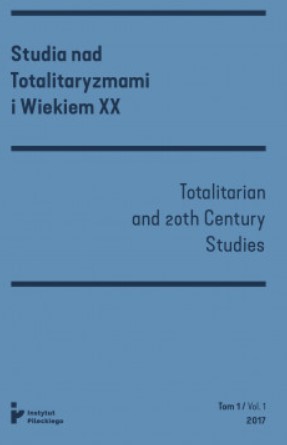How The Associated Press Supported the Nazi Media Campaign During the German Attack on Poland In September 1939
How The Associated Press Supported the Nazi Media Campaign During the German Attack on Poland In September 1939
Author(s): Norman DomeierSubject(s): Media studies, Military history, Political history, Politics and communication, Interwar Period (1920 - 1939), WW II and following years (1940 - 1949), Fascism, Nazism and WW II, Peace and Conflict Studies
Published by: Instytut Solidarności i Męstwa im. Witolda Pileckiego
Keywords: German aggression on Poland; Nazi propaganda; Associated Press;
Summary/Abstract: Contrary to what could be expected, relatively little attention has been given in historical research to the actions of foreign correspondents accredited in Berlin during the Third Reich. The focus has been on “the other side of journalism,” that is on the relations between the state and the people, as well as on Nazi Germany’s propaganda apparatus and its leading figures, such as Joseph Goebbels. This is particularly thought-provoking, as the foreign journalists working in Berlin made a major contribution to shaping the international perception of Nazi Germany and increasing global awareness of its nature and actions. What is more, it is largely forgotten these days that at the beginning of the Second World War, American reporters followed military units of all belligerents, since the United States was a neutral country up until December 1941. The article presents the top American journalists working in Berlin – Louis Lochner (AP), William Shirer (CBS) and Otto Tolischus (“New York Times”) – who for some time accompanied Wehrmacht units or had the opportunity of coming to Poland towards the end of 1939 or at the beginning of 1940, under German supervision. What did their work look like? What did they include in (and omit from) their reports? What impact did their texts have on the North American and international public? Finally, to what extent were their radio broadcasts and articles shaped by the trips arranged for them by the German Ministry of Propaganda? In the context of my 2017 archival discovery concerning the secret co-operation between the Associated Press and Nazi Germany in the years 1942–1945, part of the article will be devoted to American photographic journalism of 1939–1940.
Journal: Studia nad Totalitaryzmami i Wiekiem XX
- Issue Year: 2021
- Issue No: 5
- Page Range: 326-351
- Page Count: 26
- Language: English

